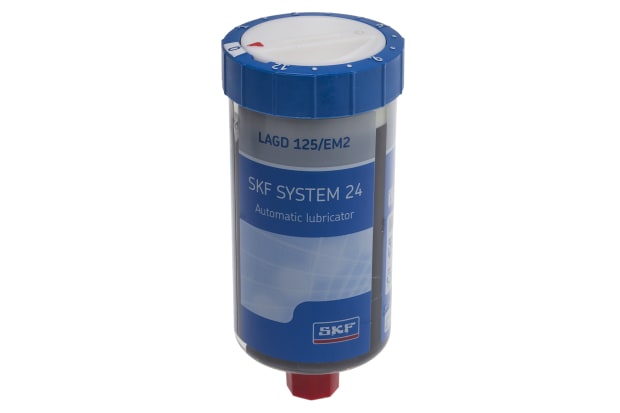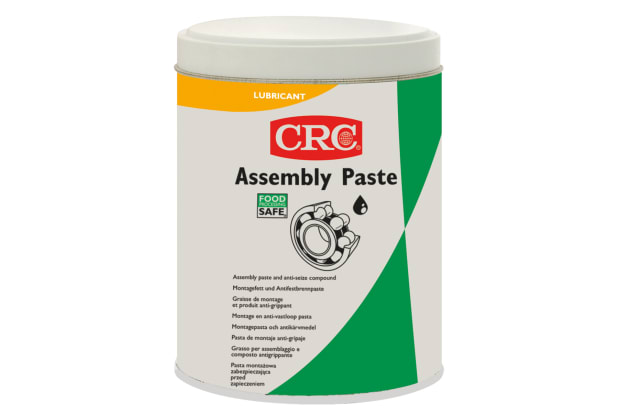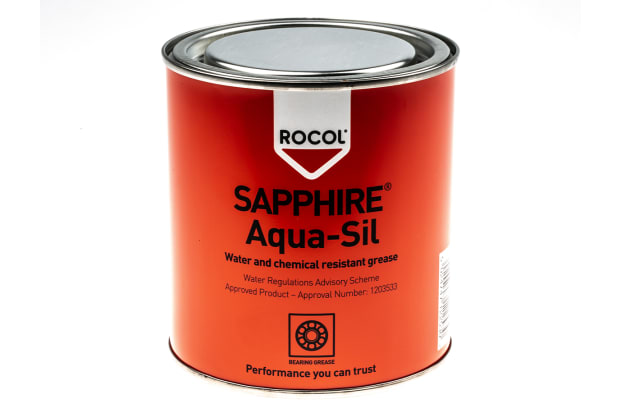- Published 6 Jan 2023
- Last Modified 13 Mar 2024
- 7 min
The Complete Guide to Greases

What is grease?
Grease is a thick oily substance which is commonly used as a lubricant. It consists of a petroleum-derived or synthetic oil which is held in place by the gel structure of a thickening agent. It’s typically formed of these three components, which keep it in a semi-solid state:
- Thickener – 5% to 20%
- Base oil – 80% to 95%
- Additives – 0% to 10%
All three of these ingredients have different uses. The thickeners are soaps, which lubricate to reduce friction between moving surfaces. It’s there to hold oil in reserve until it’s needed to lubricate. When exposed to movement, vibration or temperature change, it’s triggered to release oil.
The additives complement the lubricating ability of the base oil – enhancing its ability to protect against wear and rust. It has a high viscosity to begin with, but as stress or shear is applied its thickness levels decrease and it becomes oilier; practically the same thickness as its base ingredient. This process is called thixotropy and is characteristic of this lubricant – differentiating it from others such as petroleum jellies.
The image to the right shows the typical colours and consistency of grease.
What is grease used for?
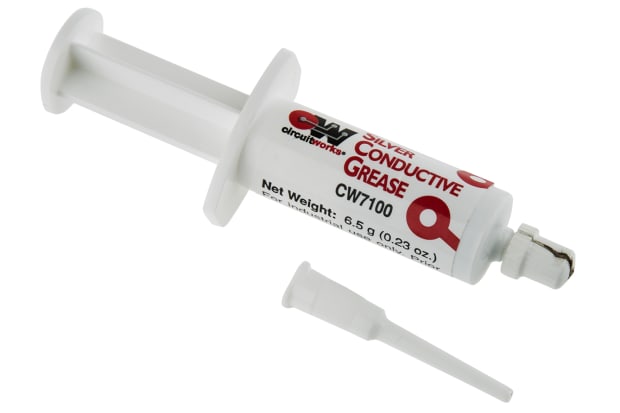
It’s used to protect against water ingress and provides rust protection, as well as reducing friction experienced by machines.
It has a high viscosity, so it’s a better choice for applications where liquid lubricants such as oil wouldn’t stay in place. This means grease and oil are not interchangeable.
Thanks to it's water resistance, it can act as a sealant and is commonly used in the automotive industry for tasks such as chassis, wheel bearings and gears.
Here are some of its other common uses:
For lubrication of machinery or equipment which is used intermittently or in storage for a long period of time.
Any machinery or equipment used in extreme conditions, such as high temperatures, pressures and shock loads. That’s because grease provides thicker film cushions, whereas oil films can be too thin for these applications.
Machinery that isn’t easily accessible for frequent lubrication. High-quality greases can lubricate components for an extended period of time without frequent replenishing, and are used in applications which are sealed for life, for example electrical motors and gearboxes. If needed, it can be applied using a grease gun.
It can also be used on worn components, as it maintains thicker films in clearances enlarged by wear and can even extend the life of worn parts which were previously oil lubricated. Thicker grease films can also offer noise insulation.
Different types of greases
Here is a selection of the different types of greases available on the market.
Aluminium
This type offers high temperature tolerance, excellent resistance to water and good shear stability.
It’s frequently used in food machinery and can be used on all types of studs, nuts and bolts.
Lithium
This is a white general purpose grease that’s commonly used in household and gardening applications, such as door hinges and bearings.
It has high levels of viscosity and works well under pressure and long-term lubrication. It’s ideal for metal-to-metal applications and has a higher melting point than calcium-based greases, but isn’t water resistant.
Synthetic-based
This is the most commonly used lubricant for rotating machinery components, such as bearings.
It offers greater tolerance to extreme temperatures and environments which could be too hostile for mineral-based alternatives.
This type tends to be the best at resisting oxidation, offering longer fluid life.
Mineral-based
This range offers high mechanical stability and excellent anti-corrosion qualities, while another benefit is affordability.
This type is suitable for use in the automotive industry, as well as electric motors and water pumps.
Multi-purpose
This is the most commonly used type in the automotive industry. It’s typically made from calcium sulfonate and has high water resistance, however it isn’t designed to be used with high levels of heat.
Marine
Boats and boat trailers also require the use of grease, however it needs to be suitable for high exposure to water. Fresh and salt water affects normal types of grease, so marine grease has been designed to withstand water.
When using it, though, it’s important to know what type of grease is already in place, as it isn’t compatible with lithium-based products.
Dielectric
This silicone-based lubricant is a cloudy white paste that’s designed to be used with sensitive components, such as electronics.
It’s effective for protecting against galvanic corrosion, which affects high-voltage electronic components.
Factors to consider
Depending on the application and task at hand, when choosing the right product there are some key considerations to look at before purchasing.
Viscosity
It needs to have high viscosity to stay in place and offer protection against the effects of friction.
A very thin lubricant won’t withstand heavy loads where there are slow moving parts, just as a really thick lubricant applied to a high-speed electric motor won’t be able to protect it. That’s why it’s important to know which type of product will offer the best results.
Base oil
This can be either conventional or synthetic, and there’s a big difference in the results. Synthetic grease offers better protection against oxidation and the most resilient coverage in all types of weather.
Shear stability
Consistency of a grease may change as it’s worked or sheared – so its ability to maintain its consistency when worked it its shear stability. Greases which soften as they’re sheared are thixotropic, while ones which harden are rheopectic.
Additives
Grease contains certain materials which enhance its qualities and help it work better in specific applications, and so these should be considered to ensure the right one is being used.
Consistency
The consistency refers to its resistance to change through an applied force. Its consistency is determined by the type and amount of thickener it contains and the viscosity of the base oil used.
The measure of consistency is known as penetration, and its penetration depends on whether the consistency has been altered by stress, handling or working.
The most common thickeners are soaps, typically lithium, which allow the different components to bond better and provide a more efficient product.
Water resistance
This is its ability to withstand the effects of water with no change to its lubricant qualities, consistency and texture.
What greases are compatible?
Mixing greases can cause problems, with the different components reacting with each other. It can result in changes to the physical and chemical structure and impact its performance, so proper care should be taken to ensure compatibility between greases when changing from one to another.
The table below shows more information on which greases are compatible and which aren’t.
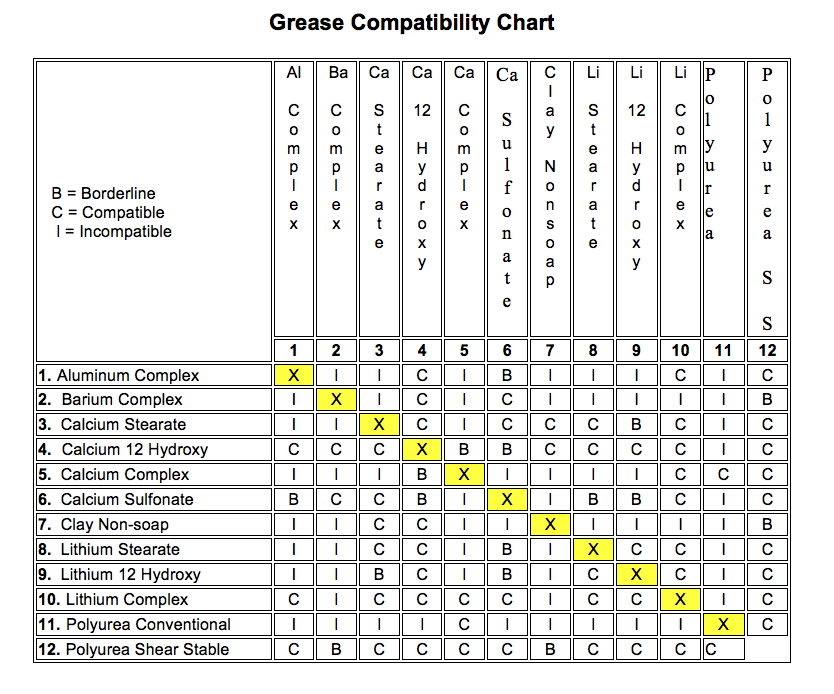
How are greases graded?
NLGI Grease Consistency Classification
The commonly used grease consistency classification is that established by the National Lubricating Grease Institute (NLG). It classifies greases in terms of their hardness or softness only, with no other property or performance level taken into account. The below image shows the system used to classify industrial greases.
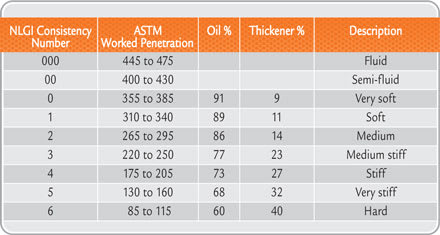
How does grease reduce friction?
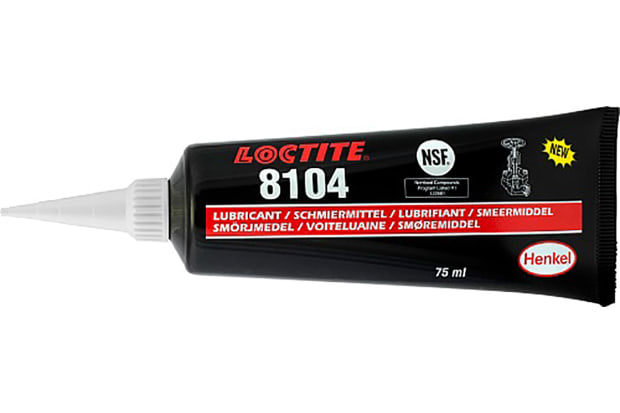
Friction is the resistance that one surface or object encounters when moving against another, which restricts them from sliding or rolling over one another. So two unlubricated surfaces, for example the teeth of two interlocking gears, are slowed down by friction.
While they appear to have smooth surfaces from a distance, they're in fact rough at an atomic level – meaning one surface drags against the other, which wastes energy and wears out the materials.
Lubrication controls friction and wear by introducing a friction-reducing film between moving surfaces, so a lubricant such as grease helps reduce friction in two ways. Firstly, it smooths and cushions the bumps between the two surfaces and, because it's a liquid, can change shape and flow.
Popular grease brands
Please click on the links below to view greases produced by some of our most popular brands. As well as greases, we also stock a wide range of other useful oils and lubricants.
